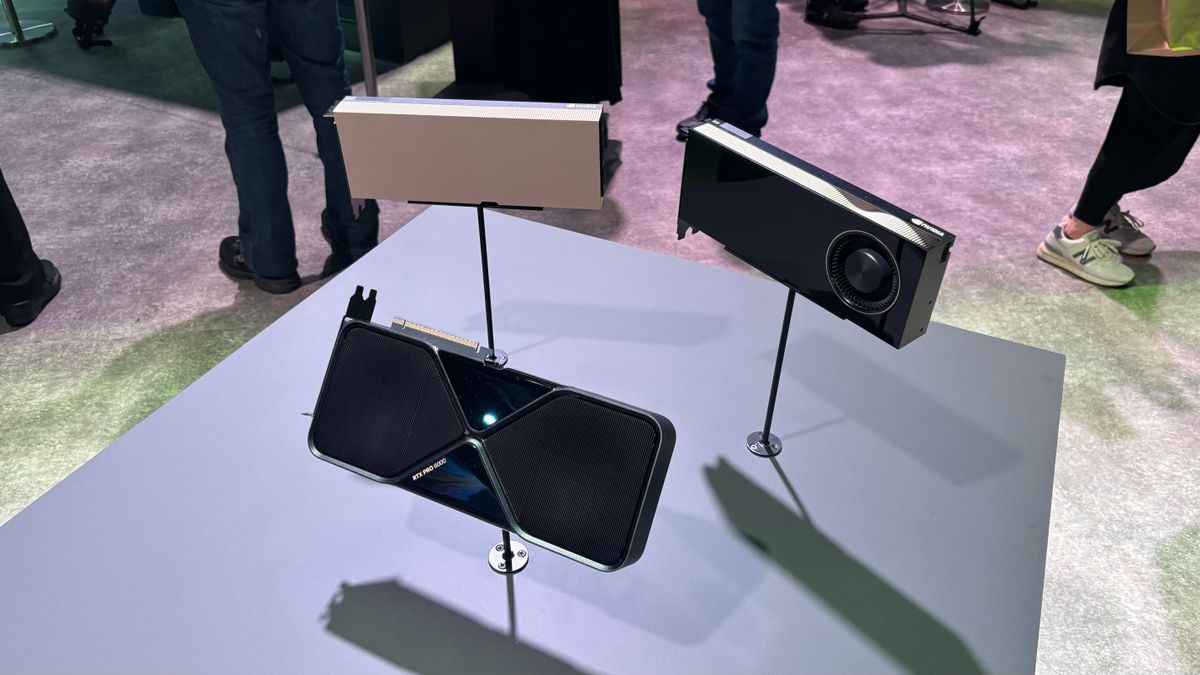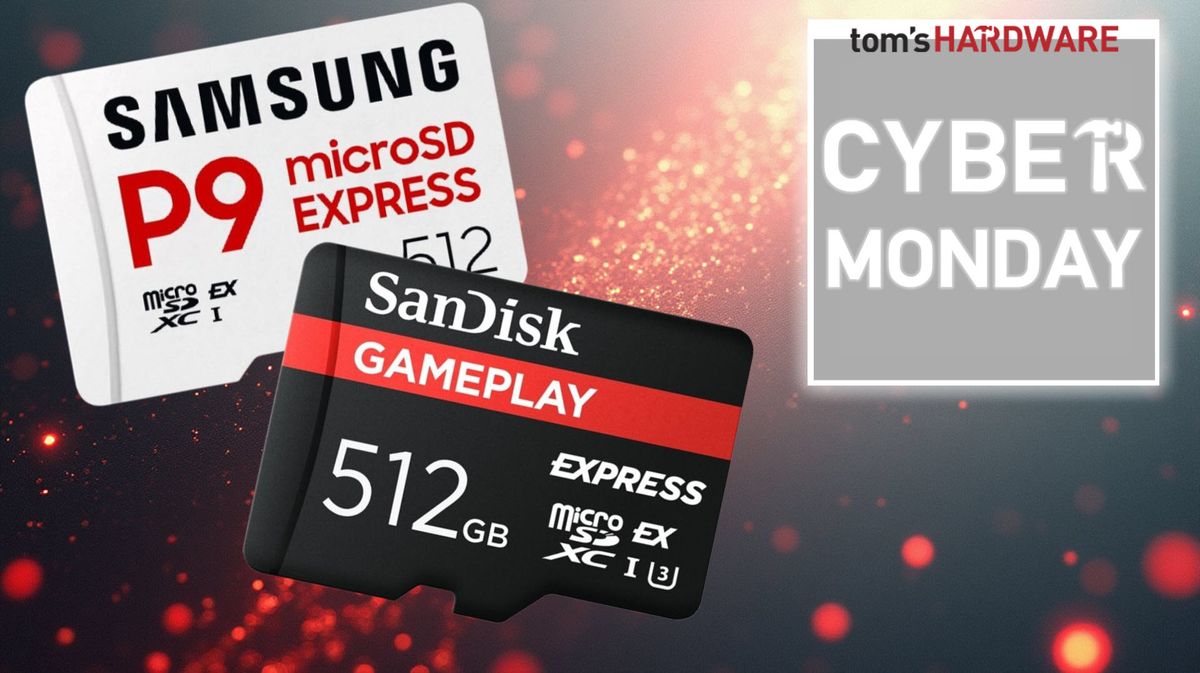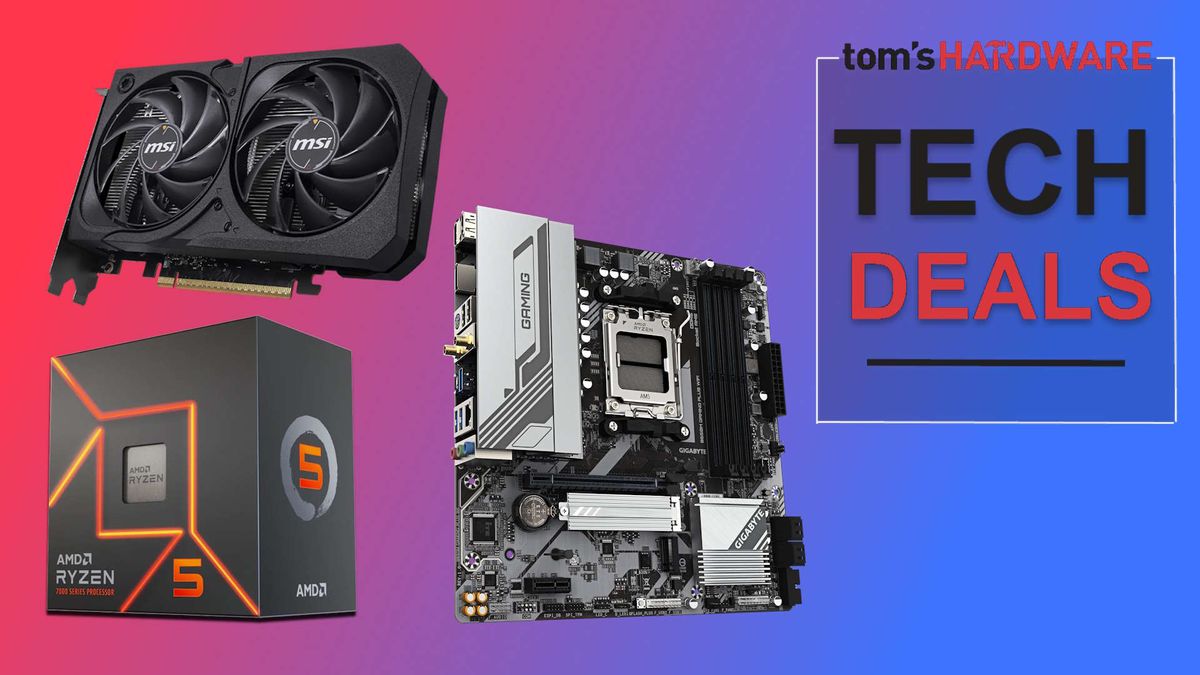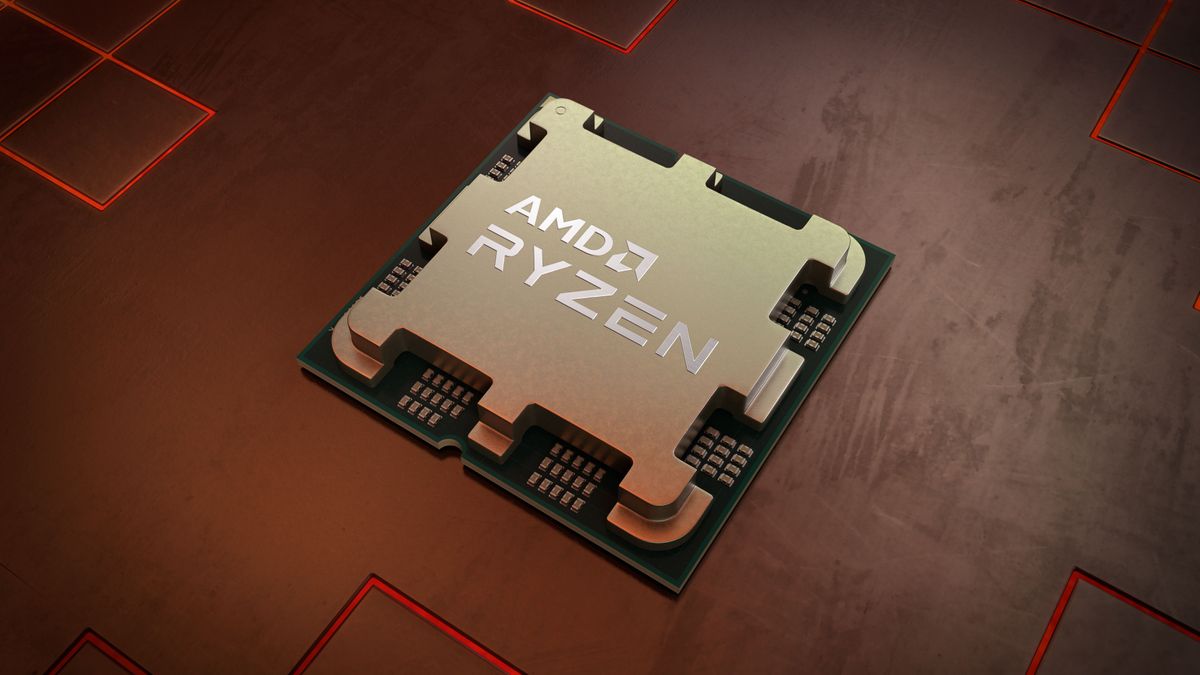The Nvidia Blackwell RTX Pro 6000 GPU was announced during the GTX 2025 keynote. These will use the same GB202 die that goes into Nvidia's RTX 5090 graphics card, but with some significant changes in some of the other aspects. There will be three variants of the RTX Pro 6000: the Blackwell Workstation Edition, Max-Q Workstation Edition, and Blackwell Server Edition.
The core specifications for the RTX Pro 6000 are the same across all three models. You get 188 SMs enabled, out of a potential 192 maximum from GB202. That's 10.6% more SMs, shader cores, tensor cores, RT cores, etc., relative to the RTX 5090. Clock speeds weren't given, but Nvidia does list up to 125 TFLOPS of FP32 compute via the shaders, and 4000 AI TOPS from the tensor cores. That works out to a boost clock of around 2.6 GHz, but that won't be the same for all three variants.
The RTX Pro 6000 features the full 128MB L2 cache of GB202, along with four NVENC and four NVDEC video blocks. RTX 5090 only has 96MB of L2 cache and three each for NVENC/NVDEC. It's very close to a fully enabled chip, with only 2% of the SMs disabled.
The memory configuration is the same for all three variants. As discussed in the initial RTX Pro 6000 announcement, Nvidia uses 24Gb (3GB) GDDR7 chips rather than the 2GB chips used on the consumer GeForce RTX 50-series cards. That increases the memory capacity to 48GB per PCB side, and with chips on both sides of the PCB in 'clamshell' mode, there's 96GB total. The memory has the same 28 Gbps clocks as most of the 50-series parts, with 1792 GB/s of total bandwidth.

The Blackwell Workstation Edition looks basically the same as the RTX 5090, except with a glossy black finish in places rather than a matte black. TDP (TGP) for the card is 600W, 25W higher than the 5090, but otherwise, the two cards look about the same. You also get four DisplayPort 2.1b outputs, whereas the 5090 typically offers at least one HDMI 2.1b output.
For the Max-Q Workstation Edition, the TGP gets capped at 300W. Half the power will naturally mean lower typical boost clocks for a lot of workloads, though there will undoubtedly be cases where it will still run nearly as fast as the 600W card. It also has a standard FHFL (full-height, full-length) dual-slot form factor with dual-blower fans at the back of the card. It also has four DP2.1b outputs.
Finally, the Blackwell Server Edition has a similar form factor to the Max-Q card but ditches the fans, instead relying on the server fans to provide airflow and cooling. That's usually in ample supply for servers, and noise levels are usually less of a concern — you get high RPM fans moving lots of air in a regulated environment to make everything run sufficiently cool. The power on the Server Edition is configurable up to 600W, so some installations might opt for lower power to optimize the efficiency if they're power-limited.
All three models use the same 16-pin connector found on desktop RTX cards. Servers and workstations tend to be built to much tighter specifications, and so far there haven't been any widespread reports of servers or workstations with melting connectors. That suggests perhaps that the biggest issues with 16-pin connectors are component quality and proper installation — companies are less likely to cheap out on the cables in a server or workstation, so there aren't impurities causing hot spots and melting.
Pricing hasn't been discussed, but we typically see professional and server solutions like the RTX Pro 6000 selling for 4X~5X more than the equivalent consumer GPUs. It wouldn't be surprising if the various RTX Pro 6000 cards cost $10,000 or more. We'll find out exactly where they fall in the coming days.

 8 months ago
126
8 months ago
126







 English (US) ·
English (US) ·